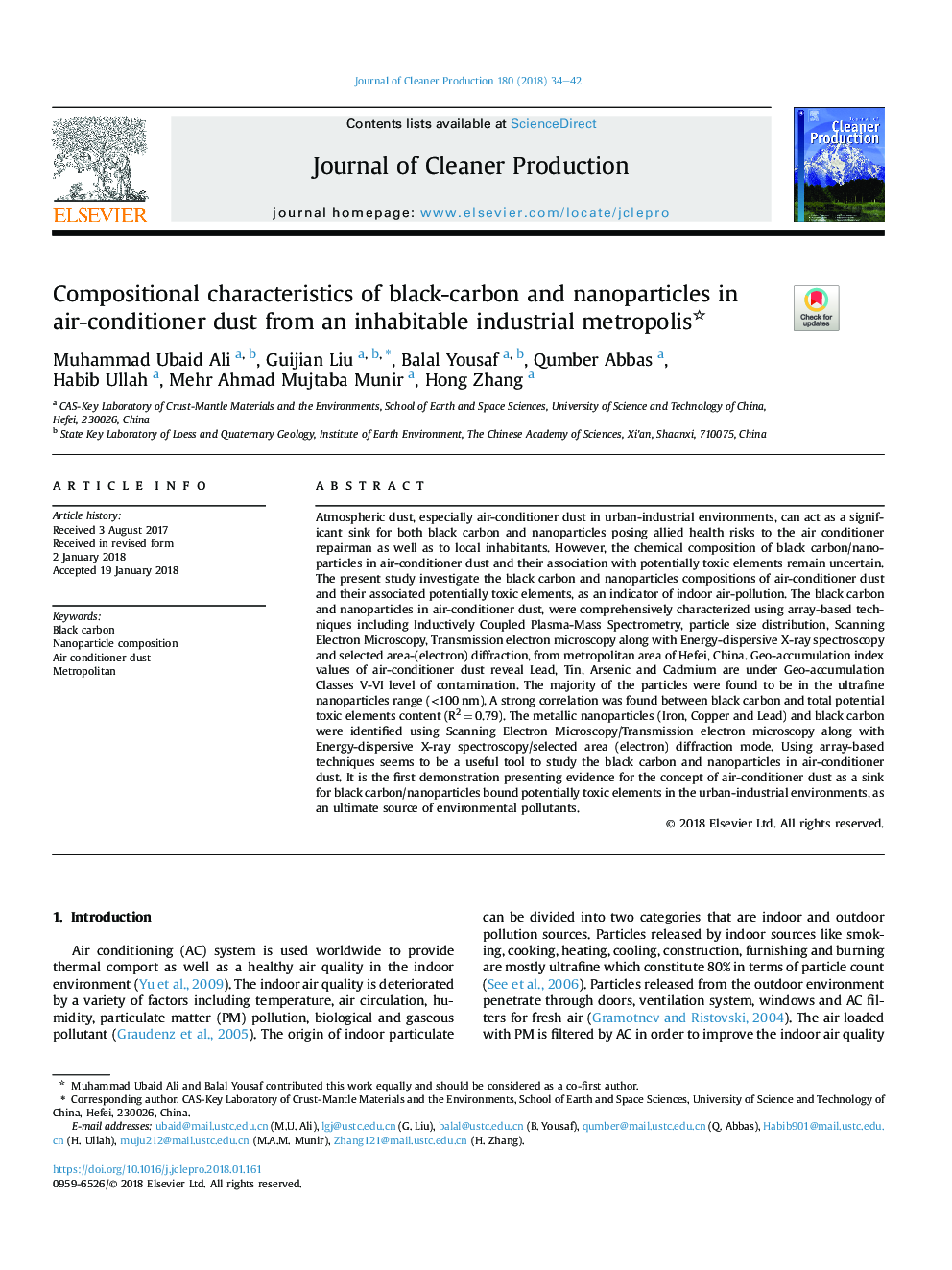| Article ID | Journal | Published Year | Pages | File Type |
|---|---|---|---|---|
| 8097831 | Journal of Cleaner Production | 2018 | 9 Pages |
Abstract
Atmospheric dust, especially air-conditioner dust in urban-industrial environments, can act as a significant sink for both black carbon and nanoparticles posing allied health risks to the air conditioner repairman as well as to local inhabitants. However, the chemical composition of black carbon/nanoparticles in air-conditioner dust and their association with potentially toxic elements remain uncertain. The present study investigate the black carbon and nanoparticles compositions of air-conditioner dust and their associated potentially toxic elements, as an indicator of indoor air-pollution. The black carbon and nanoparticles in air-conditioner dust, were comprehensively characterized using array-based techniques including Inductively Coupled Plasma-Mass Spectrometry, particle size distribution, Scanning Electron Microscopy, Transmission electron microscopy along with Energy-dispersive X-ray spectroscopy and selected area-(electron) diffraction, from metropolitan area of Hefei, China. Geo-accumulation index values of air-conditioner dust reveal Lead, Tin, Arsenic and Cadmium are under Geo-accumulation Classes V-VI level of contamination. The majority of the particles were found to be in the ultrafine nanoparticles range (<100â¯nm). A strong correlation was found between black carbon and total potential toxic elements content (R2â¯=â¯0.79). The metallic nanoparticles (Iron, Copper and Lead) and black carbon were identified using Scanning Electron Microscopy/Transmission electron microscopy along with Energy-dispersive X-ray spectroscopy/selected area (electron) diffraction mode. Using array-based techniques seems to be a useful tool to study the black carbon and nanoparticles in air-conditioner dust. It is the first demonstration presenting evidence for the concept of air-conditioner dust as a sink for black carbon/nanoparticles bound potentially toxic elements in the urban-industrial environments, as an ultimate source of environmental pollutants.
Keywords
Related Topics
Physical Sciences and Engineering
Energy
Renewable Energy, Sustainability and the Environment
Authors
Muhammad Ubaid Ali, Guijian Liu, Balal Yousaf, Qumber Abbas, Habib Ullah, Mehr Ahmad Mujtaba Munir, Hong Zhang,
